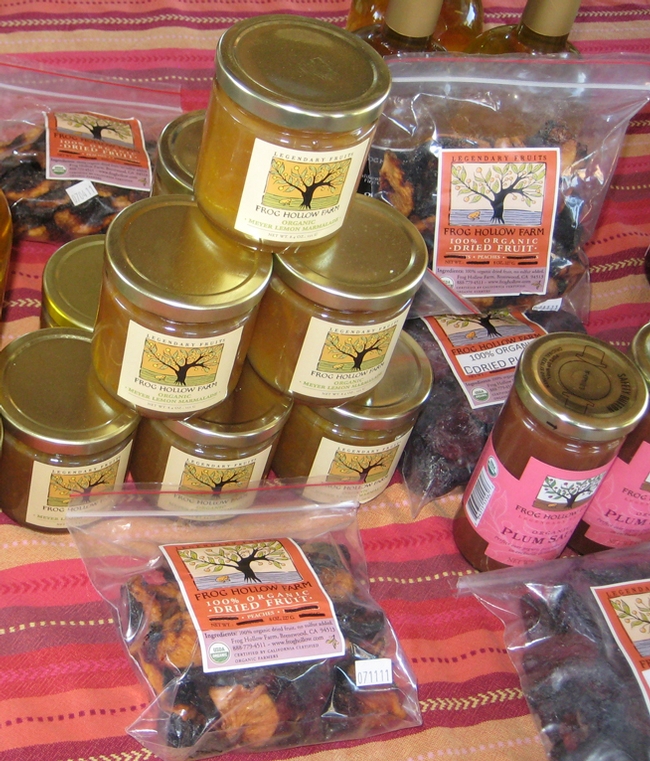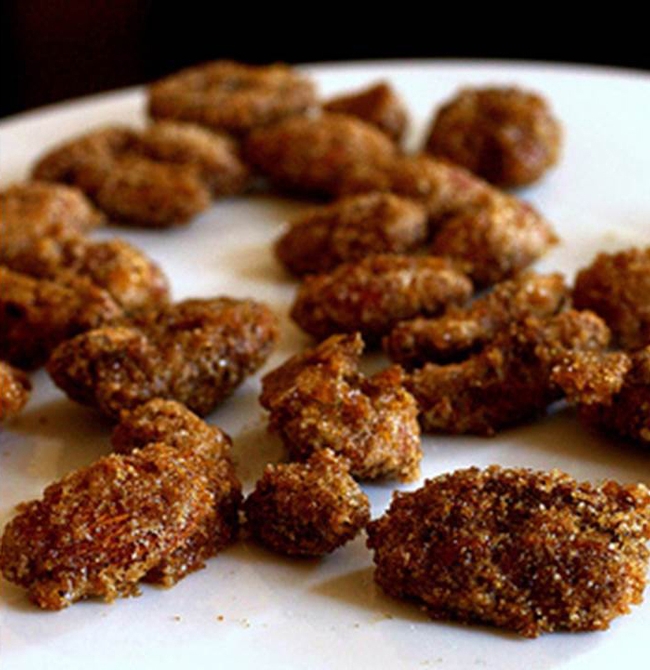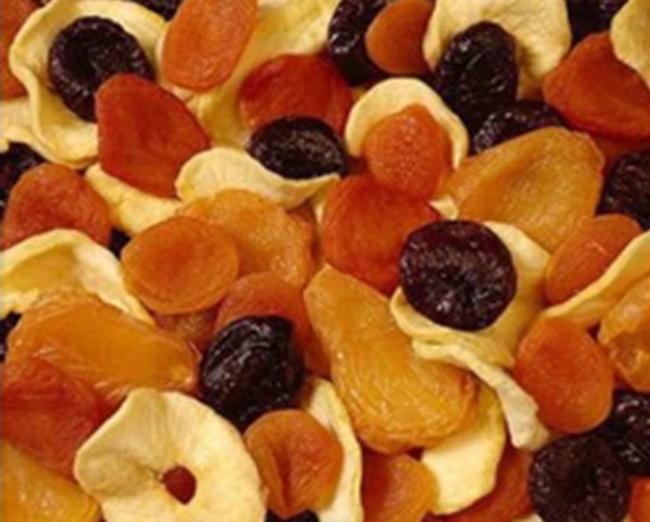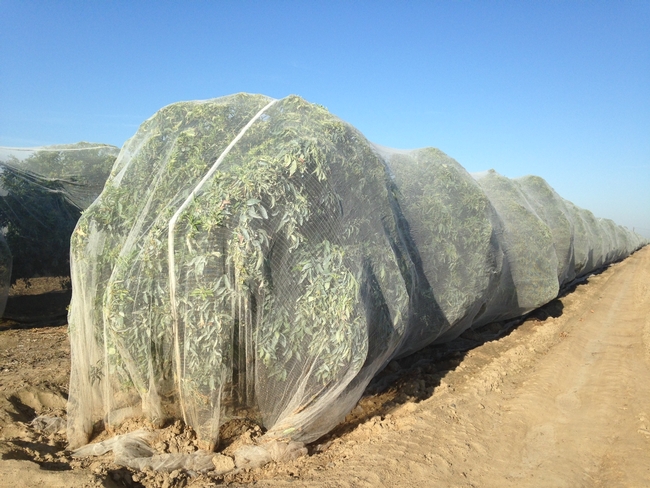UC Food and Agriculture Blogs
Cottage Foods - a business in your home kitchen?
Have you thought of trying to sell your homemade jam, granola, pies, or candy? Do you have fruit from your orchard or vegetables from your farm that would have more value processed than sold fresh? Maybe a Cottage Food Operation is the place to test your product and your market and start your new business.
Cottage Food Operations recently became legal in California. Before the California Homemade Food Act (AB1616) was signed into law in 2012, no commercial food production was allowed in home kitchens. The new law allows individuals to prepare and package certain non-potentially hazardous foods in private-home kitchens (referred to as "Cottage Food Operations"), and to sell limited quantities of these foods directly to the public or to stores and restaurants for resale.
UC Cooperative Extension educators are offering two-session Cottage Food Operations Workshops at six different locations in Northern California. This hands-on workshop series is designed especially for farmers of fruits, vegetables, nuts, herbs, and honey interested in making value-added products in home kitchens as Cottage Food Operations (CFOs). The workshops are open to everyone. Classes will be small, with a maximum of 35 participants. Sign-ups are coming in fast, and some workshop locations are almost full, so anyone interested is encouraged to register soon. Registration is available on-line. Each two-session workshop costs $25 in advance, or $40 at the door, space permitting.
Workshop participants will learn multiple aspects of starting a safe and profitable home food production business, including the details of the Cottage Food Law, planning, processing, food safety, packaging & storage and marketing. Instructors will be UCCE nutrition educators, economists and farm advisors. Representatives from local environmental health agencies will provide information about the local application process. Each workshop will also feature hands-on demonstrations and tastings by current Cottage Food Operators making a variety of products.
Shermain Hardesty, UC Small Farm Program Extension Economist, is coordinating the project, which is partially funded by a California Department of Food and Agriculture Specialty Crop Block Grant. Dr. Hardesty thinks that marketing may be the hardest part of creating a successful Cottage Food Business for many farmers and other entrepreneurs. She will teach the basic "Four P's" of marketing: product, place, price and promotion.
Another big challenge to producing a commercial food product in a home kitchen, according to Hardesty, could be all the time that the producer will have to take properly sanitizing their home kitchen before and after they do the production work.
Although the new state law requires that Cottage Food Operations be permitted in all counties, with permits issued by the County Department of Environmental Health in each county, fees for registration and permits vary from county to county. Counties and municipalities may also vary in other restrictions and conditions required before Cottage Food Operations receive their necessary business license. Some counties or cities may place limitations on the number of customers per hour to a home business, limitations on open hours for sales from home, and parking space requirements for customers. The workshops will help participants understand how to navigate the registration and permitting process.
A Cottage Food Operation can be a good testing ground for a farmer to assess the marketability of a new product on a small scale. It can also be a low-cost way for a farmer to assess his or her own ability to produce and market a new product. Due to the restrictive nature of some aspects of the Cottage Food law, and the limited scale of production possible in a home kitchen, most producers may have to scale up eventually to be profitable. However, at least one farm family that is currently using a commercial kitchen for jam production is taking the class to decide whether a Cottage Food Operation would be an economical addition to their production capacity.
Registration for all six workshop series' is open now. Workshops take place from 9:00 a.m. to 4:30 both days. Lunch is provided. The workshop fee pays for both days. Attendance at workshop session one is required to attend session two. Workshop dates and locations:
- Fairfield, May 13 & May 20, 2014
- Ukiah, May 15 & May 22, 2014
- Eureka, May 28 & June 11, 2014
- Redding, May 29 & June 10, 2014
- Jackson, June 12 & June 16, 2014
- Sacramento, July 1 & July 9, 2014
Cost: $25 in advance/ $40 at the door, space permitting
Register online: http://ucanr.edu/cfoworkshops
For more information: Shermain Hardesty, UC Small Farm Program, 530-752-0467, shermain@primal.ucdavis.edu
Rad-ish or just plain Rad?
I have finally gotten to the bottom of something that has been eating at me for a long time. Why don't more people like radishes? Let's face it, they're just not in the popular crowd and now I know why. Here goes: it's in the name. The vegetable is...
Lady Beetle Releases for Aphid Control in Gardens: Do They Work?
Many retail nurseries and garden centers sell lady beetles for controlling aphids in gardens and landscapes. Gardeners often ask, “Does releasing lady beetles really work?” University of California research has demonstrated that lady beetle...
To bee or not to bee depends on the crop
Bees do it. Birds do it. Even bats do it. They all help plants reproduce by carrying pollen from one flower to another. Beetles, butterflies, wasps, flies and moths are also pollinators.
About 35 percent of the food we eat depends on the assistance of bees to pollinate plants and trees so they will produce fruit, nuts or vegetables. It takes 1.6 million colonies of honey bees to pollinate California's 800,000 acres of almond trees.
Our food choices would be dramatically reduced if bees weren't around to pollinate. To illustrate what the produce section of a grocery store would look like in a world without bees, Whole Foods Market removed the products that depend on pollination from one of its stores and took a photo. See the difference: http://ucanr.tumblr.com/post/84164840510/kqedscience-whole-foods-shows-customers-the. Without bees, more than half the fruits and vegetables were eliminated.
Honey bees and other pollinators are being threatened by the drought, disease, mites, loss of habitat and food sources, according to Eric Mussen, UC Cooperative Extension specialist in the Department of Entomology at UC Davis and bee expert.
But not everyone wants help from pollinators. To produce seedless fruit, some citrus growers cover their mandarin trees to keep out bees because the mandarins, or tangerines, produce seeds if the tree is pollinated. Most consumers prefer their mandarins to be seedless.
Beth Grafton-Cardwell, UC Cooperative Extension specialist in the Department of Entomology at UC Riverside and director of Lindcove Research and Extension Center, talks about the role of pollinators in California agriculture in this video: http://www.youtube.com/watch?v=8suOt5PnzWc&feature=youtu.be.
To see photos of different kinds of pollinators and to learn more about how to help them thrive, visit our pollinator page. On May 8, help count the pollinators in your community and add them to the map at http://beascientist.ucanr.edu.
Green Garlic and Garlic Scapes
The spring is a wonderful time to visit the farmers market. After a winter menu of hearty greens, storage potatoes, and winter squash, the tender shoots and leaves of the spring farm are a welcome sight! One of the interesting crops that you can find at...








